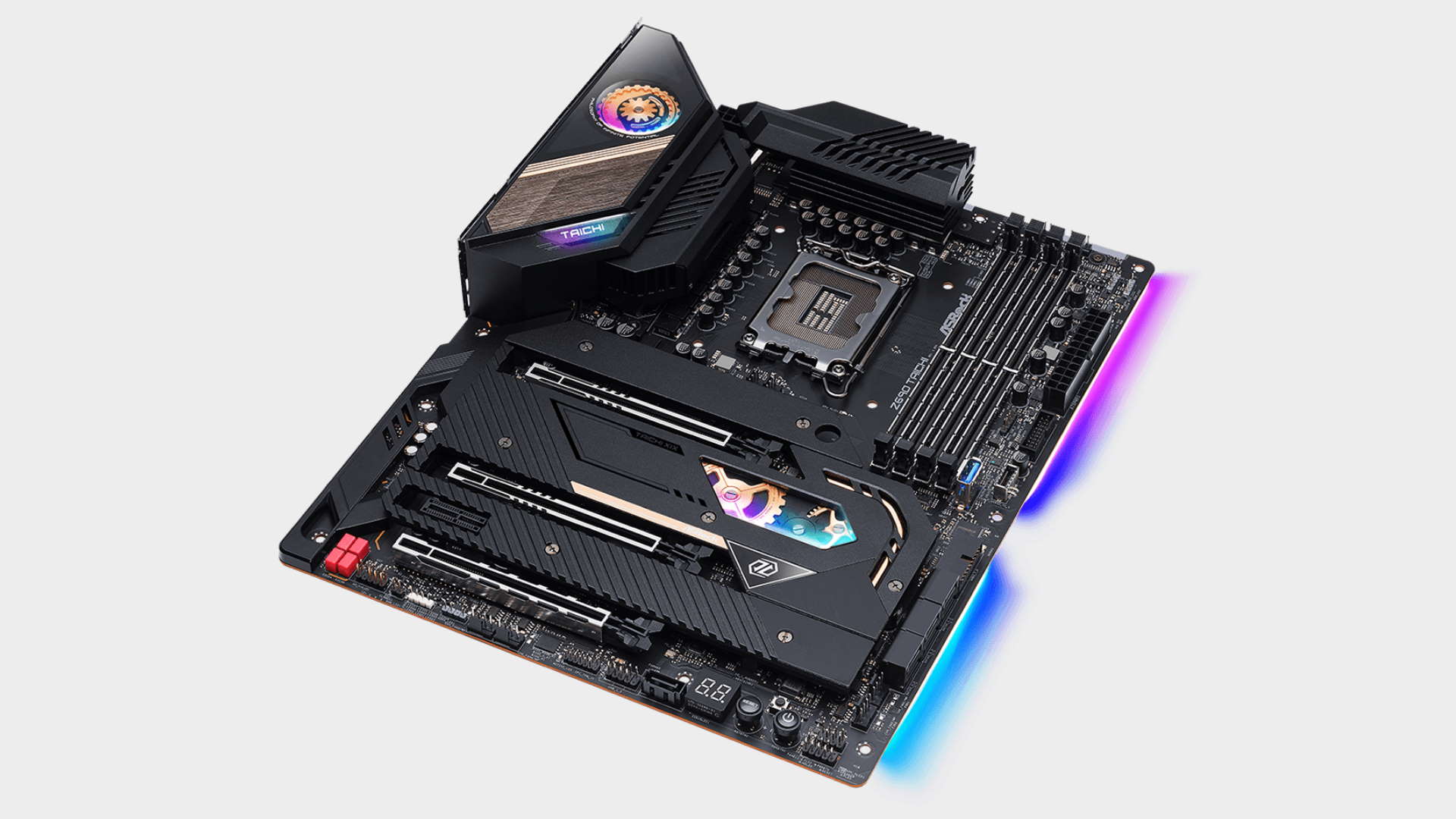Our Verdict
ASRock has delivered a mature and feature rich offering, but like all too many PC components in 2021, its pricing is difficult to accept.
For
- Dual Thunderbolt 4 Type-C
- Mega VRM
- Good networking
Against
- Only three M.2 slots
- Like all high end Z690 boards, it’s expensive
PC Gamer's got your back
Intel's 12th Gen CPUs may be impressive chips, but you need a good motherboard home for them. The new Z690 chipset is the high-end offering, and we've got the ASRock Z690 Taichi here to put through its paces. But what difference can a motherboard really make when all is said and done?
When ASRock first launched its Taichi brand, we were impressed with its less-is-more design approach. It offered a good feature set and value for money without the excessive RGB overload that was common to gaming boards a few years ago. The brand has now evolved into a genuinely high end one. The yet-to-be-seen Aqua is the company’s top model, but with its expected limited-edition nature and likely stratospheric price, the Taichi will essentially be ASRock’s premium Z690 motherboard.
It’s designed to compete with the likes of the Aorus Master, MSIs MEG Ace and the Asus Maximus range. There’s some tough competition among that lot to be sure. Let’s see what makes the ASRock Z690 Taichi tick, and tick it does. Literally.
The look of the board is definitely unique, and though looks are in the eye of the beholder, for me the Taichi’s cyberpunk theme, with its copper coloring, looks great. You get a good splash of RGB and there are cogs above the I/O that actually move. It looks expensive. If you use Razer products, there’s a Razer themed Z690 Taichi for easy integration into the Chroma ecosystem, too.
An overview of the board reveals some interesting features and design choices. You get dual PCIe 5.0 slots that operate at either x16/0 or x8/x8. There’s a PCIe 4.0 slot and a PCIe 3.0 1x slot. The latter may be valuable for many as some competing boards, such as the Aorus Master and Asus Hero, include just the three x16 slots.
Socket: Intel LGA 1700
CPU compatibility: Intel 12th Gen
Form factor: ATX
Storage: 3x M.2; 6x SATA
USB: 2x Thunderbolt 4 Type-C; Up to 1x USB 3.2 Gen2x2, 2x USB 3.2 Gen 2, 9x USB 3.1 Gen 1, 3x USB 2.0
Video out: 1x HDMI
Networking: Killer Wi-Fi 6E; Killer E3100G 2.5G and Intel I219V 1G LAN
Audio: Realtek ALC1220 7.1 Channel HD Audio
Price: $590 | £530
There are a total of seven SATA ports, one of which (along with a single USB port) is independent from the others. Asrock says these can function as a protection from malware. You also get a VGA holder bracket to prevent your GPU from sagging.
It’s worth noting is the location of two of the CPU fan headers, which are positioned above the primary M.2 slot. Does this help or hinder cable management options? It depends on your configuration, but it's worth considering when you put your build together.
Perhaps the main feature weakness of the board is its M.2 complement. There are only three slots, with one of them supporting PCIe 3.0 x2 only. It may not be an issue for a typical gamer with a couple of M.2 drives and a SATA drive or two, but the Taichi does lack a little compared to some other boards in this price range, ones that support up to five M.2 drives.
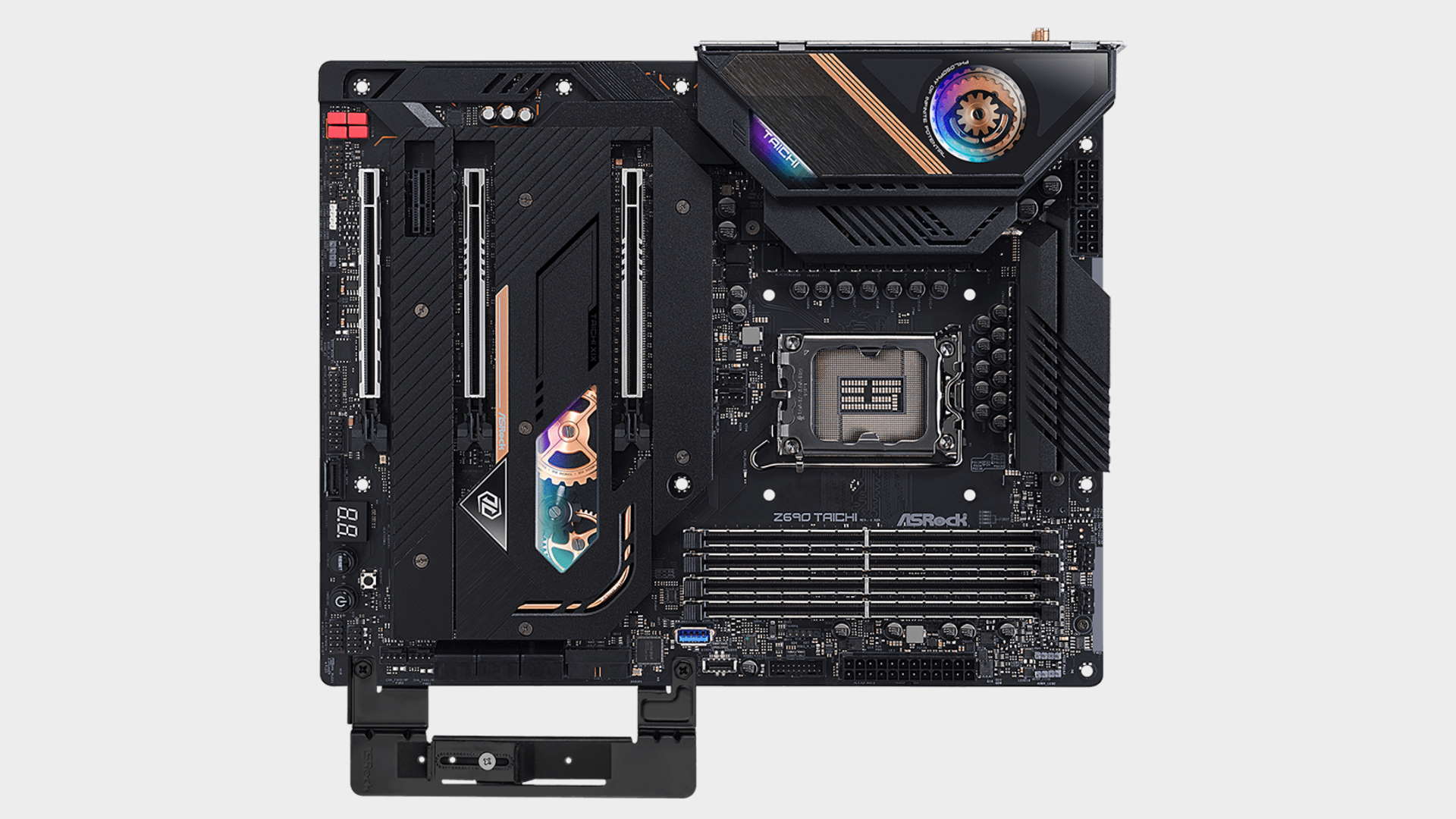
If you’ve read our Core i9-12900K review, you’d have read that under stock operation, it can pull a serious amount of power, and that’s before even thinking about overclocking. As is the case with most high end Z690 boards, the ASRock has a very strong VRM solution. With its 20-phase 105A stages, even a heavily overclocked 12900K won’t stress it.
It seems likely that vendors designed the boards to cope with power guzzling AVX-512 loads, a feature that was subsequently removed. Officially anyway. The Taichi’s VRM heatsinks have less surface area than some, but note there is an internal fan adjacent to the I/O area. We’ll admit we didn’t even know it was there until after disassembling the system.
Should you require further cooling, ASRock bundles a tiny 30mm fan and a bracket for an optional 40mm fan. Not that you should need to use them unless you have terrible case airflow. Our VRM test, consisting of 20 minutes of Cinebench looping delivered a 53°C VRM temp.
That’s not even close to being worrying.
The highlight of the rear I/O features are the dual Thunderbolt 4 ports. These are joined by two 3.2 Gen 2 ports and four 3.2 Gen 1 ports. We think six type-A ports is not enough for a high-end board, but the point is moot as ASRock includes a PCI bracket if you wish to add a couple more USB 2.0 ports via a header.
Networking duties are handled by Killer E3100G 2.5G and AX1675 Wi-Fi 6E controllers. Intel owns Rivet networks now, the company behind Killer NICs, so really, it’s all Intel. They are joined by an Intel I219V Gigabit controller. At this end of the market, 5 or 10G Lan controller would be welcome but then again, some users love to have dual LAN. The rest of the I/O panel is fairly standard, with HDMI 2.1 and ALC 1220 audio. We’re happy to see ASRock include a good quality ESS Sabre 9218 DAC; that’s a good step up from generic onboard audio.
System performance
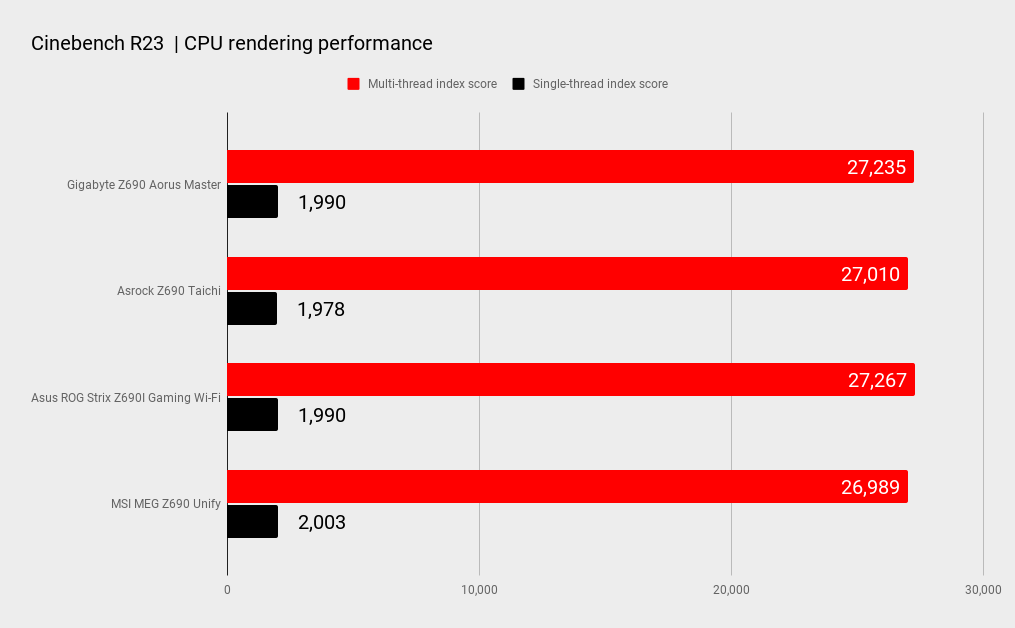
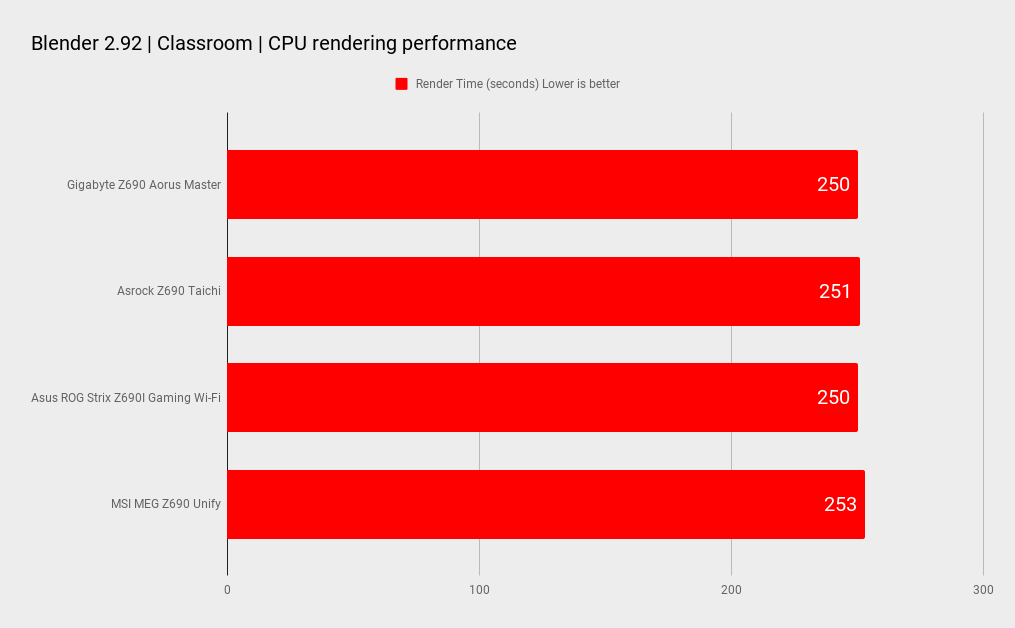
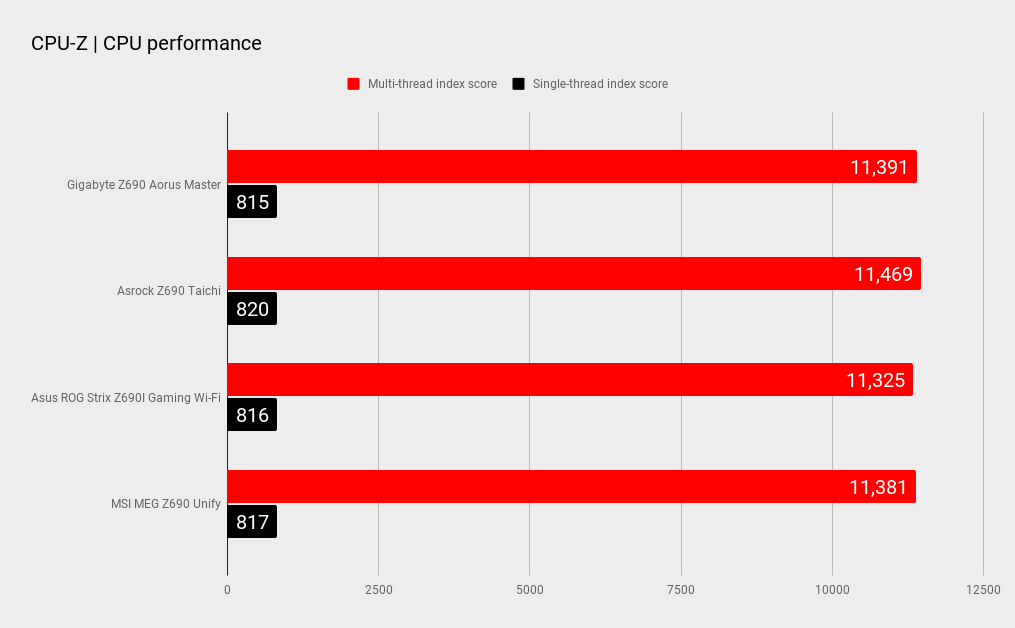
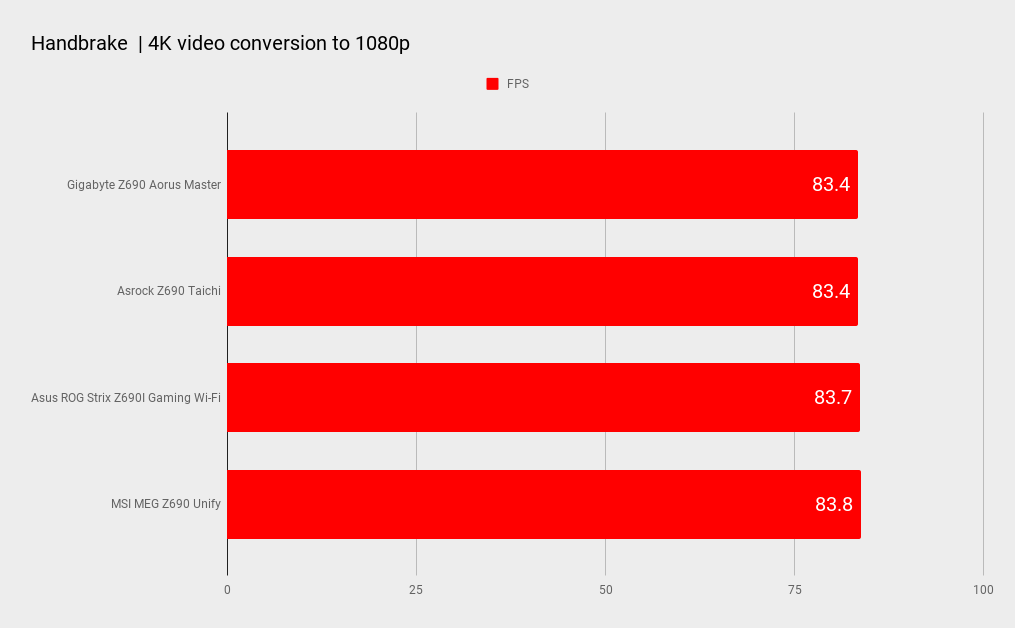
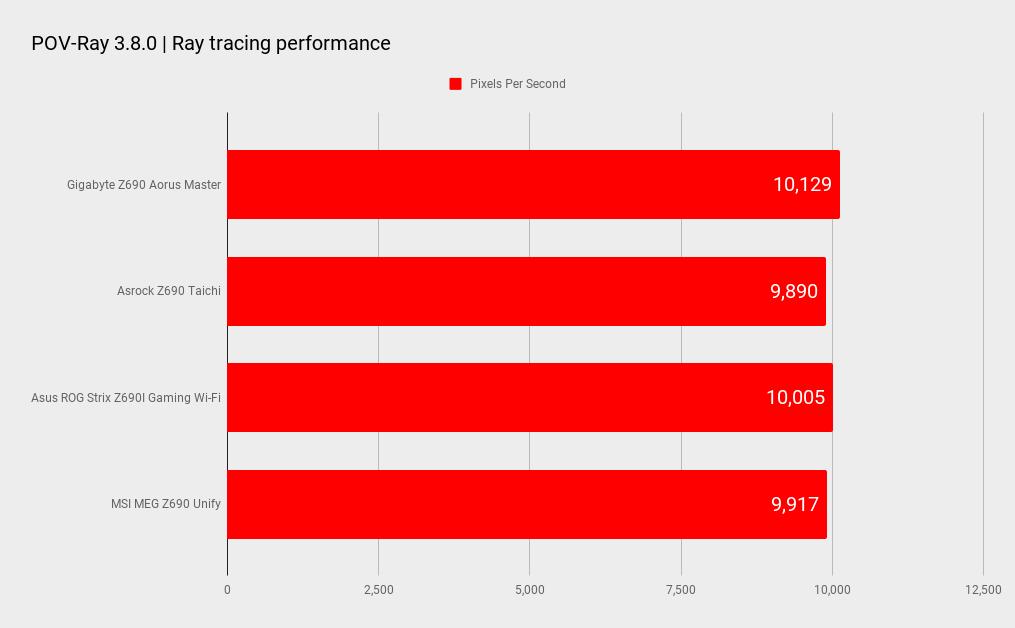

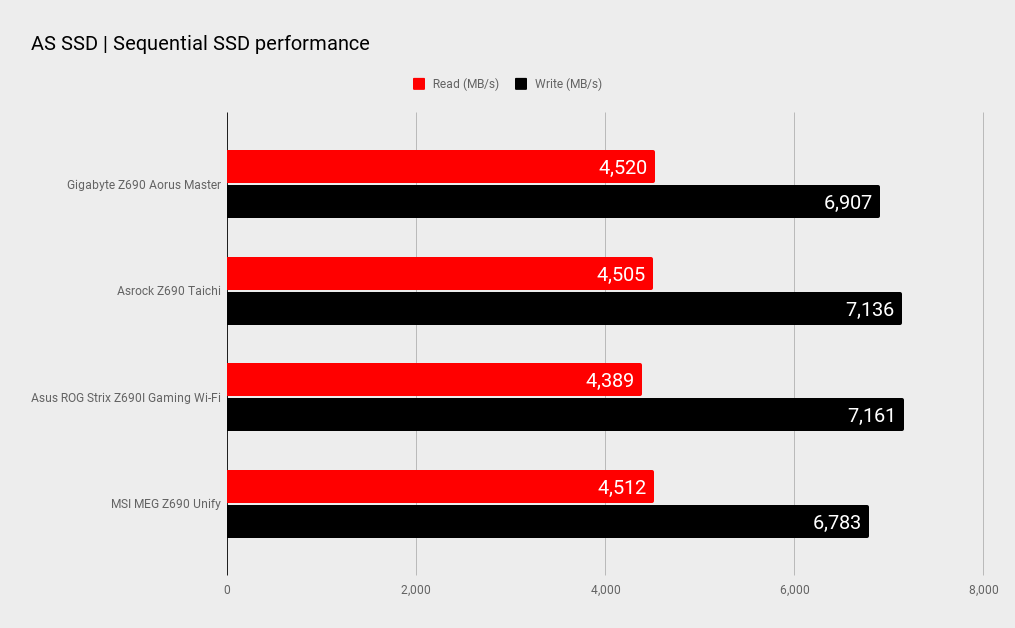
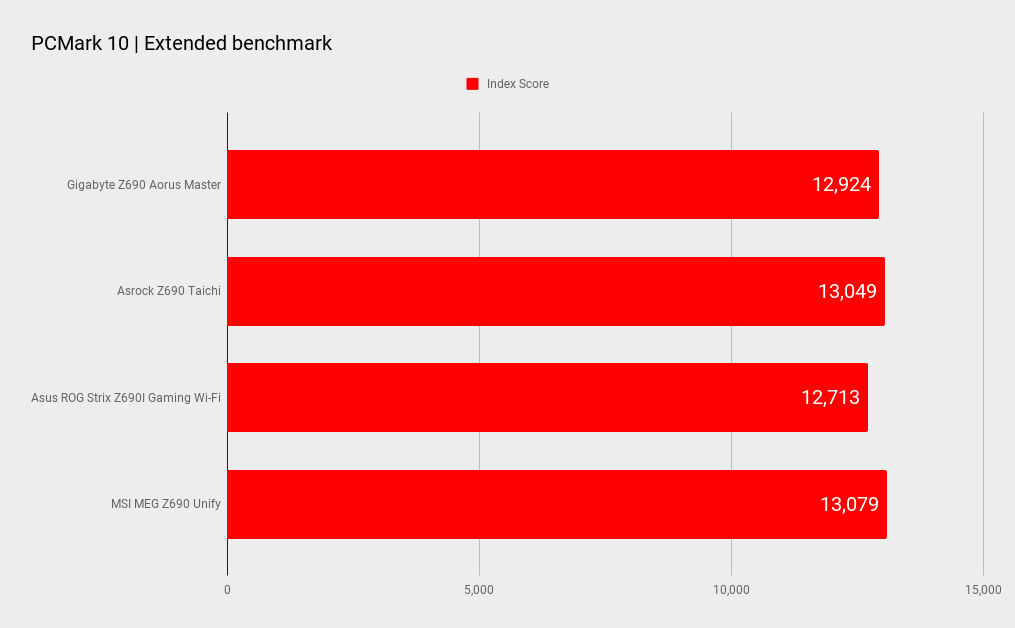
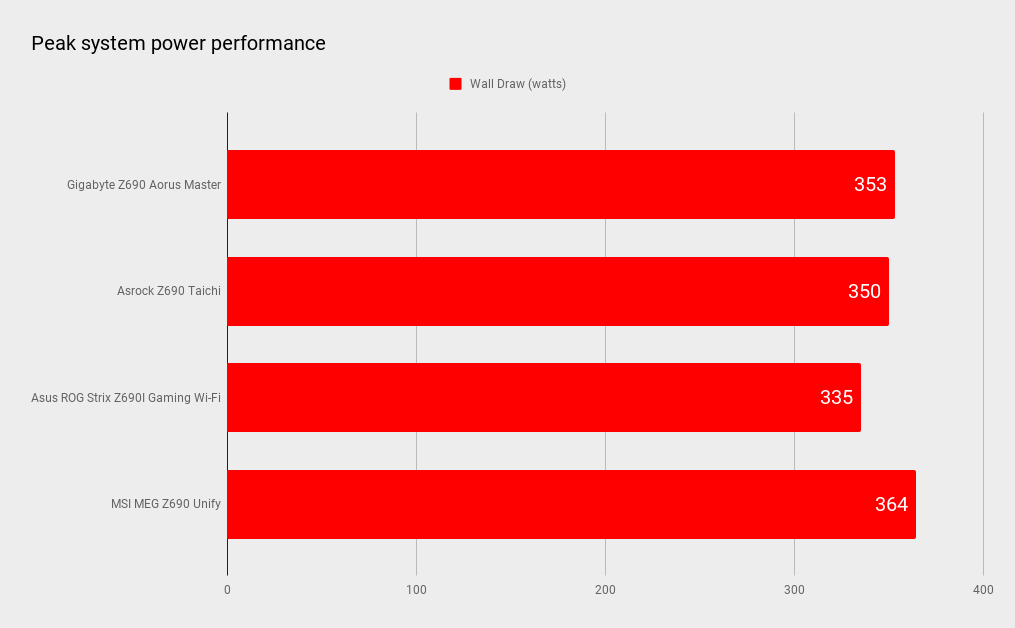
Somewhat unexpectedly, given that BIOS’ and Windows 11 have some room to mature, the Taichi and the other Z690 boards we've tested are very close in performance to one another. This is likely due to Intel’s new turbo definitions which means the CPU clocks don’t vary a lot between boards.
Gaming performance
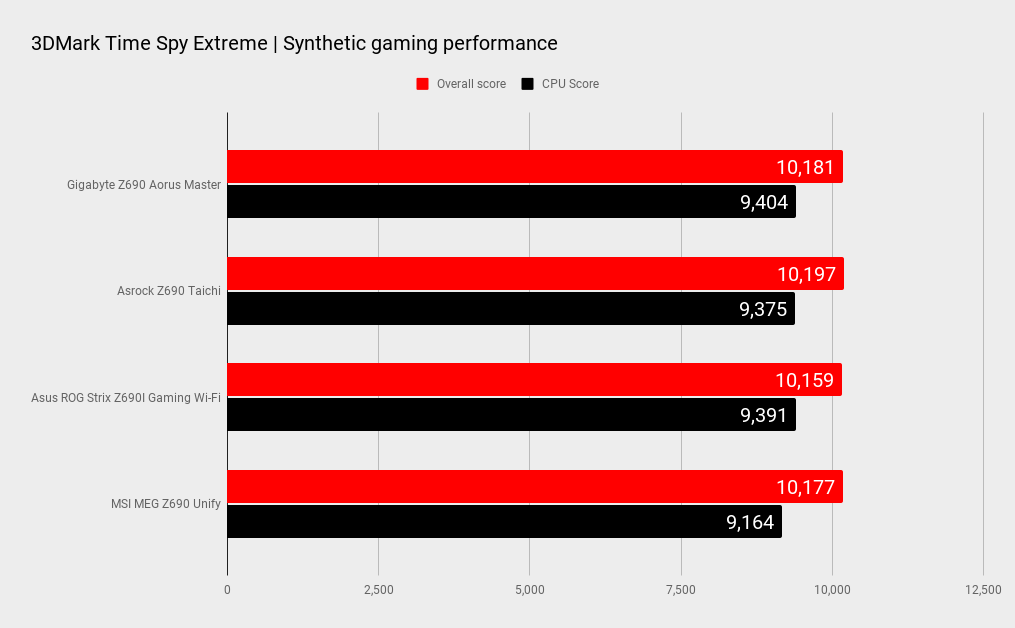
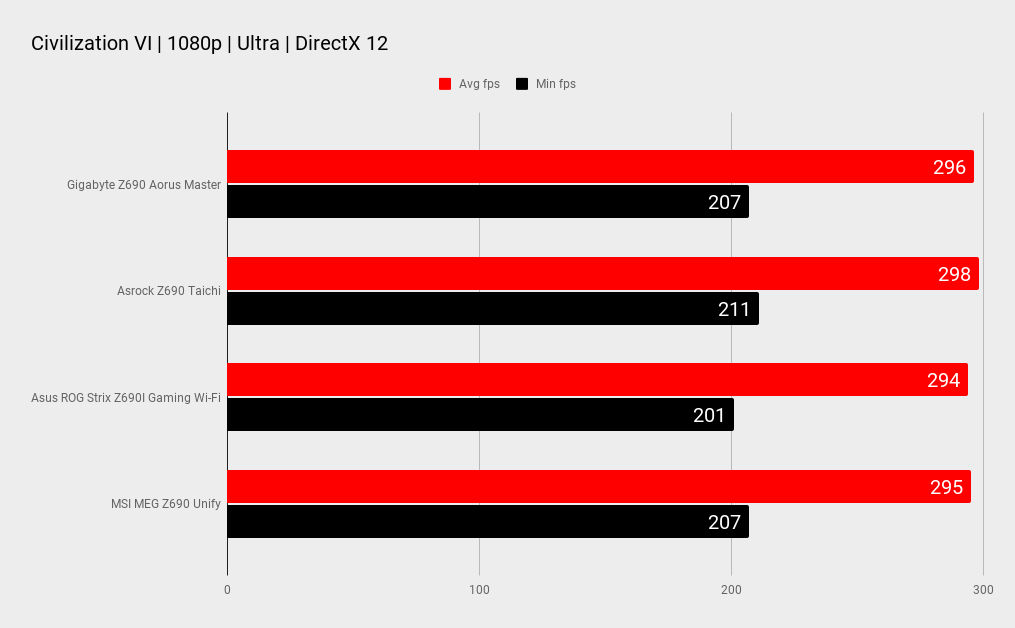
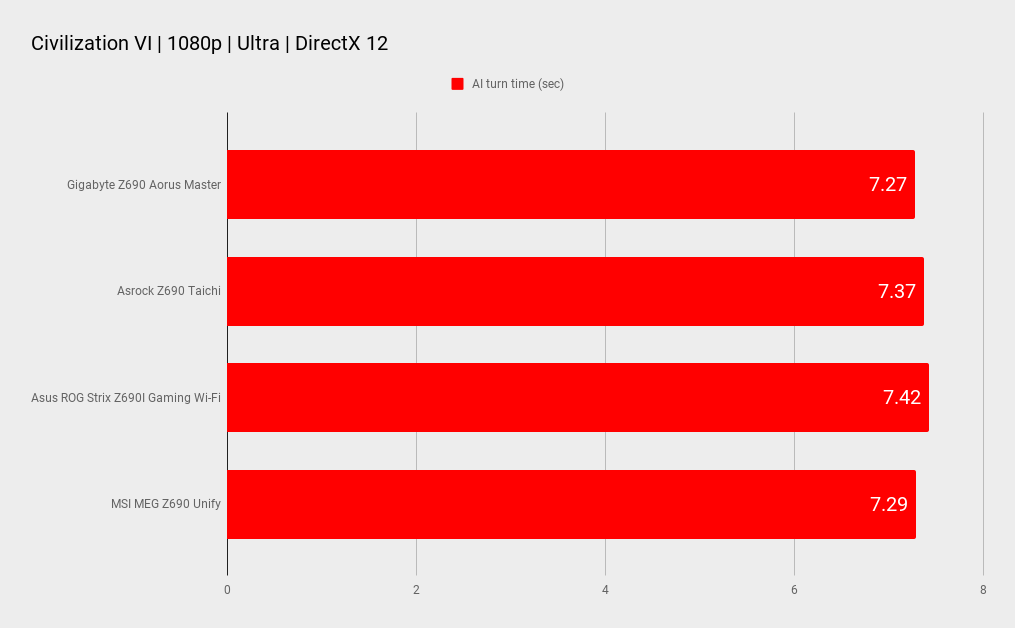
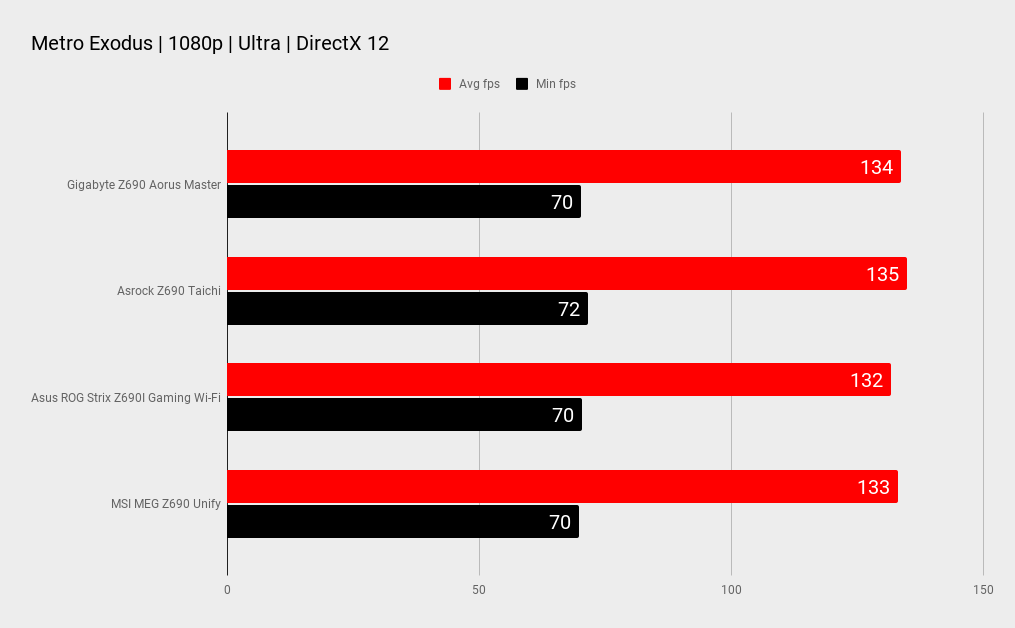
CPU: Intel Core i9 12900K
GPU: Zotac RTX 3080 Ti Amp Extreme Holo
Memory: G.Skill Trident Z5 DDR5-6000 C36
Storage: Adata XPG Gammix S70 2TB
Power Supply: Corsair AX1000
Case: Thermaltake Core P8
Cooling: MSI MEG CoreLiquid S360
OS: Windows 11 Pro
Notably, the Taichi did well at gaming tests, often leading the pack. Though 1 fps here or there isn’t significant, it’s better to lead than trail. The board was happy to run DDR5-6400 memory, something not all Z690s could do with our pre-release testing. This indicates a nice level of maturity, though as is often the case with a brand-new platform and standard, there is surely some refinement to come.

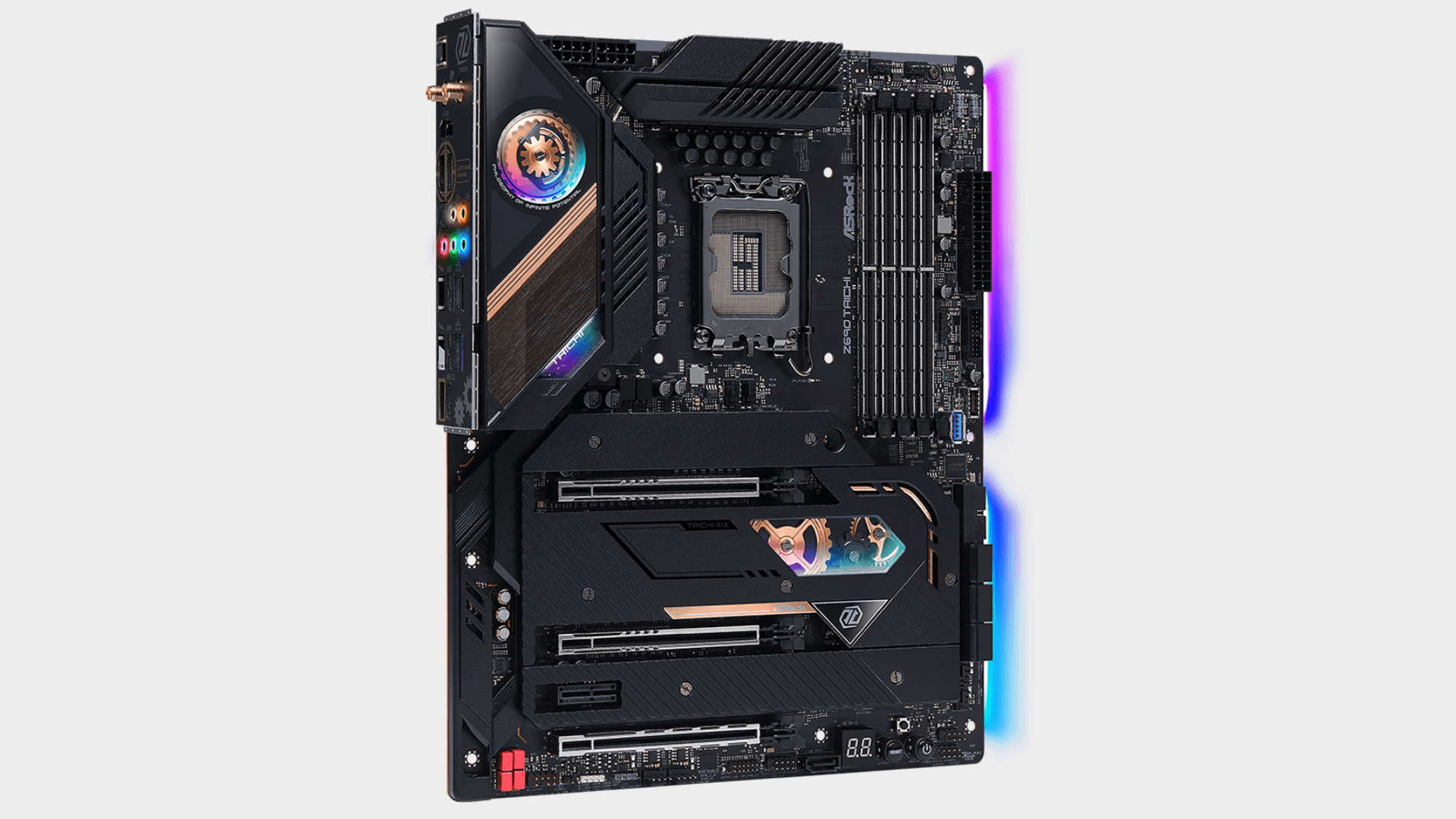
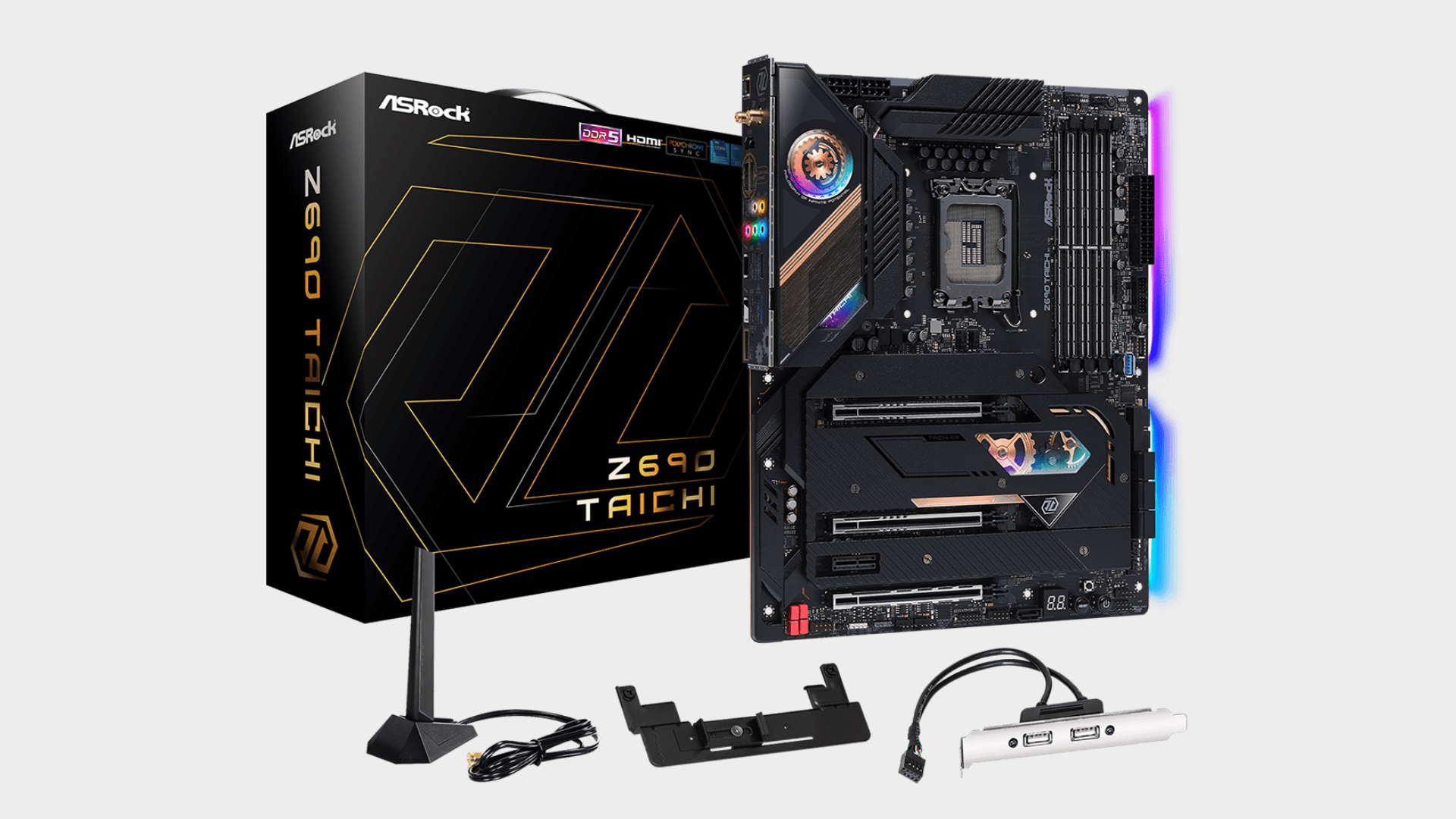
The ASRock Z690 Taichi looks every inch a premium product. Its unique aesthetic will appeal to many. Its key features including Dual Thunderbolt 4 ports, a solid audio solution, and strong early memory support weigh in its favor.
At $590 (£530) it's an expensive motherboard, though boards like the Asus Maximus Hero and Aorus Master aren’t exactly bargains either. It’s just sad the way the market is now, that boards at these prices are a new normal. But, let’s keep an open mind. In a few months’ time, the value for money analysis could be a whole lot different.
The Taichi’s great looks, solid performance and strong feature list (apart from its below par M2 support) make it a serious competitor in its price range. Let’s just hope that early adopter pricing, component shortages and DDR5 availability improves. Then a 12th Gen upgrade becomes a lot more compelling, because right now it's firmly sat in the dreamland rig build category.
ASRock has delivered a mature and feature rich offering, but like all too many PC components in 2021, its pricing is difficult to accept.

Chris' gaming experiences go back to the mid-nineties when he conned his parents into buying an 'educational PC' that was conveniently overpowered to play Doom and Tie Fighter. He developed a love of extreme overclocking that destroyed his savings despite the cheaper hardware on offer via his job at a PC store. To afford more LN2 he began moonlighting as a reviewer for VR-Zone before jumping the fence to work for MSI Australia. Since then, he's gone back to journalism, enthusiastically reviewing the latest and greatest components for PC & Tech Authority, PC Powerplay and currently Australian Personal Computer magazine and PC Gamer. Chris still puts far too many hours into Borderlands 3, always striving to become a more efficient killer.
